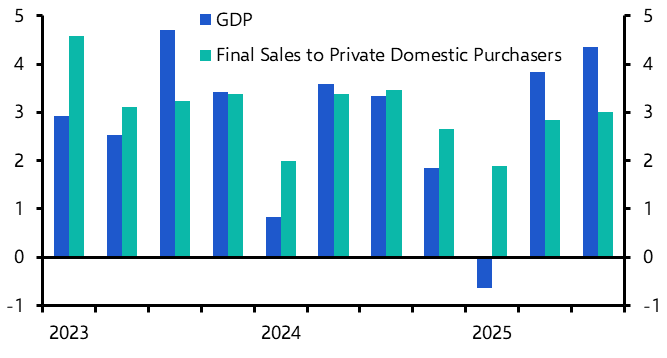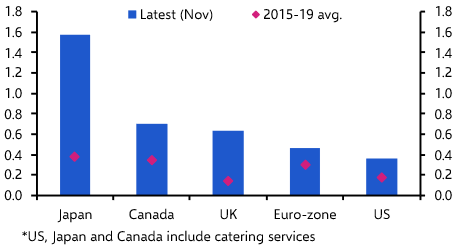The outlook for next year has brightened following the recent news on vaccines, and thoughts are starting to turn to the economic legacy of COVID-19. A key aspect of this relates to the fiscal consequences of the pandemic. This took centre stage last week in the UK as the announcement of the government’s spending review for 2021 was followed by warnings about the need for a period of belt-tightening in future years in order to repair the fiscal damage caused by the crisis. Similar concerns are likely to emerge in other countries in time.
The debate over fiscal policy tends to be framed in terms of how governments will eventually have to “foot the bill” for the pandemic. This is understandable given the scale of the support that has been provided. According to the IMF, the pandemic has produced a combined fiscal response by the world’s governments equivalent to 12% of global GDP. To put that into context, the fiscal support provided in the wake of the 2008 global financial crisis was equivalent to around 2% of global GDP. However, framing the debate in terms of “how to pay” for this support not only misses the point that without it the economic damage inflicted by the pandemic would have been even greater, it misrepresents the nature of the fiscal challenges that are likely to face governments.
It’s important to distinguish between the budget position (the flow) and the public debt position (the stock). Both matter but for different reasons.
The budget position becomes a problem if the virus results in a permanent and significant increase in the deficit such that the debt-to-GDP ratio spirals ever higher. This could result from either substantially higher spending or substantially lower tax receipts. Neither is inevitable.
Most of the increase in government expenditure should reverse once the pandemic fades. Meanwhile, the pandemic will only cause a permanent reduction in tax receipts if it causes a permanent reduction in economic activity. It’s too soon to say whether or not this might happen, but there are good reasons to think some of the pessimism about a long-term hit to output may be overdone. Taken together, it’s possible that, in contrast to previous crises, this one does not result in a substantial deterioration in the structural budget position.
This budget position is one of three things we need to consider when thinking about the evolution of the debt-to-GDP ratio. The other two are the rate of (nominal) GDP growth and the level of interest rates. Without delving into the arithmetic that governs the dynamics of the public finances, the key point is that the situation that is likely to prevail over the coming years – in which interest rates run below nominal GDP growth – greatly reduces the likelihood that the public debt ratio spirals out of control.
None of this is to say that some countries will not need to undergo a period of fiscal retrenchment once the pandemic passes. But most governments, particularly those whose central banks can stand behind their bond markets, have time to assess the scale of the damage and determine an appropriate response.
Instead, the way the debate is currently being framed carries two risks. The first is that it distracts from the much bigger medium-term questions surrounding fiscal policy. The pandemic has exposed underfunding and inequalities in health and social care. It has also led to a more fundamental reimagining of the size and role of the state. If one of the longer-term consequences of COVID is that it leads to a larger and more active state than this will need funding – yet the debate about paying for pandemic relief has crowded out discussion of this more important question.
The second, and more immediate risk, is that the focus on “paying the bill” for the pandemic threatens to push governments into premature fiscal tightening. While the economic outlook is brightening, continued fiscal support will be required to nurse economies back to health. A rush to tighten policy would not only cause the recovery to stall – it would also be the surest way to ensure the permanent economic scarring that would ultimately require a fiscal adjustment.
In case you missed it:
- Our Chief Markets Economist, John Higgins, argues that mid- and large-cap US equities will underperform their peers in the next phase of the recovery.
- Our Senior Japan Economist, Marcel Theliant, assesses growing concerns about the effect of negative interest rates on the country’s banks.
- Our Senior Property Economist, Kiran Raichura, argues that retail and office prices in the US remain unattractive.



